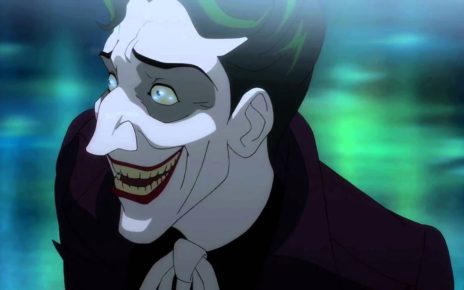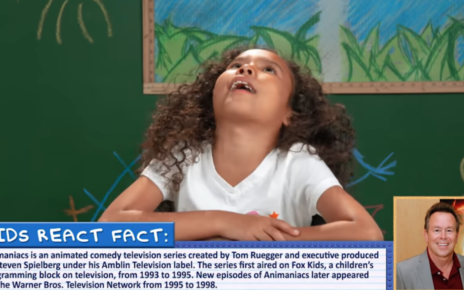Everybody knows Teenage Mutant Ninja Turtles. This was a gritty comic book about adolescent modified kung-fu reptiles exploded into a franchise that not only boasts six movies, tons of merch and games, and, um, other things, but it also has three TOTALLY RADICAL animated TV shows. Arguably the face of the franchise, the TMNT cartoons are awesome because they each uniquely own up to the weirdness of their premise. And while each reinterpretation paints the turtles with a different shade of green, deep down they’re still those bodacious heroes in a half shell we all know and love. So let’s take a look at how they’ve evolved over the years.
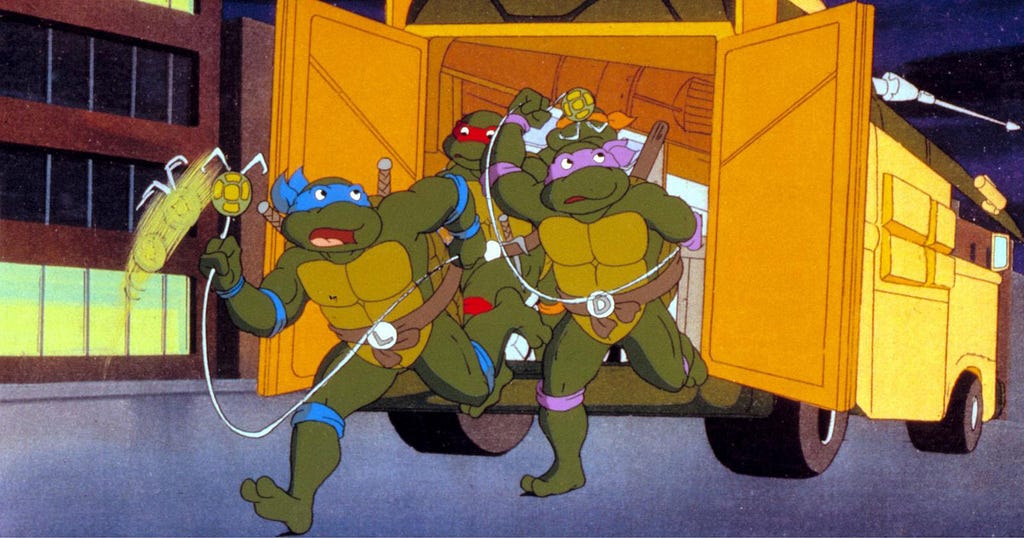
‘Teenage Mutant Ninja Turtles’ (1987)
Airtime and format: A half-hour show that, after it’s five-episode premiere in 1987, aired on Saturday mornings from 1988 to 1989, eventually expanding to weekday afternoons from 1989 to 1993.
Network: Aired in syndication from 1987 to 1990, then aired solely on CBS from 1990 to 1996.
Concept: It followed the crazy and downright tubular adventures of four anthropomorphic turtle bros trained in martial arts by their mutated rat master, often thwarting the evil Shredder and Kraang’s attempts to rule the world.
Why it worked: The first show had both the privilege and responsibility of introducing many people to the franchise, making it the go-to series most people think of when they think TMNT. It took the original, gritty turtles of Mirage comics and zapped them with an anti-gloom-and-doom ray, turning them into a bunch of lovable goofballs oozing with charm like an open vial of mutagen.
Still retaining the basic premise, ’87 made an effort to make the turtles much more accessible (and marketable) to general audiences, ensuring people could easily tell each turtle apart: color-coordinated masks, easily recognizable personalities, and an iconic theme song that encapsulates everything you need to know about the show (while also proving that just about any phrase can be catchy if you say it rhythmically over and over). It was next-level branding combined with surreal plots, cheeky humor, and an undeniably ’80s aesthetic, and it remains the measuring stick for all interpretations that came after.
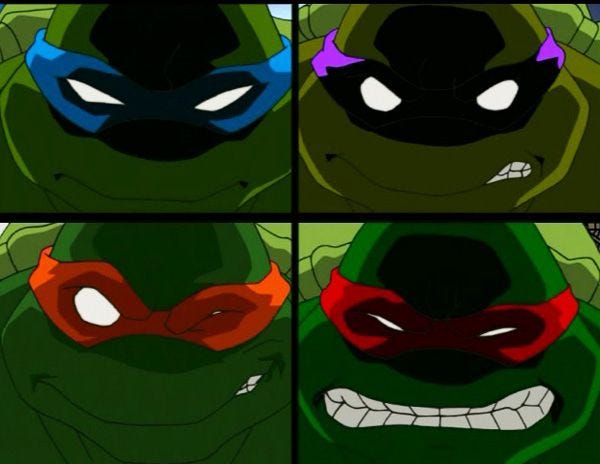
‘Teenage Mutant Ninja Turtles’ (2003)
Airtime and format: A half-hour show that aired on Saturday mornings from 2003 through 2009.
Network: Originally aired on Fox, under the programing block Fox Box (later known as 4Kids TV), from 2003 to 2009, and it eventually went on to air on Cartoon Network, Disney XD, and Nicktoons.
Concept: TMNT 2k3 acted as both a revival — introducing a new generation to the turtles — and a return to form for the franchise, exploring darker themes and storylines that were seen in the original comics.
Why it worked: 2k3 reimagined the turtles by giving them an edge as sharp as Leonardo’s katanas. The darker colors, constant action, and the totally revamped, in-your-face theme song all made it clear it wasn’t your daddy’s Ninja Turtles. Heavily inspired by the gritty storylines of the Mirage comics, 2k3 got pretty dark sometimes. Gang wars, alternate dystopian futures, ancient demons all made appearances. And its plots didn’t always get tied up with a neat little bow. It gave a deeper sense of urgency beneath the turtles’ actions, especially as 2k3 doubled-down on their heartfelt brotherly dynamic.They weren’t just fighting to do good; they were fighting to protect each other and survive together as a family.
That said, 2k3 was still hella cheesy, having fun with its cheeky one-liners, anime-influenced “whoosh-y” action backgrounds, and pre-episode narrations. It was one “shell of a time.”
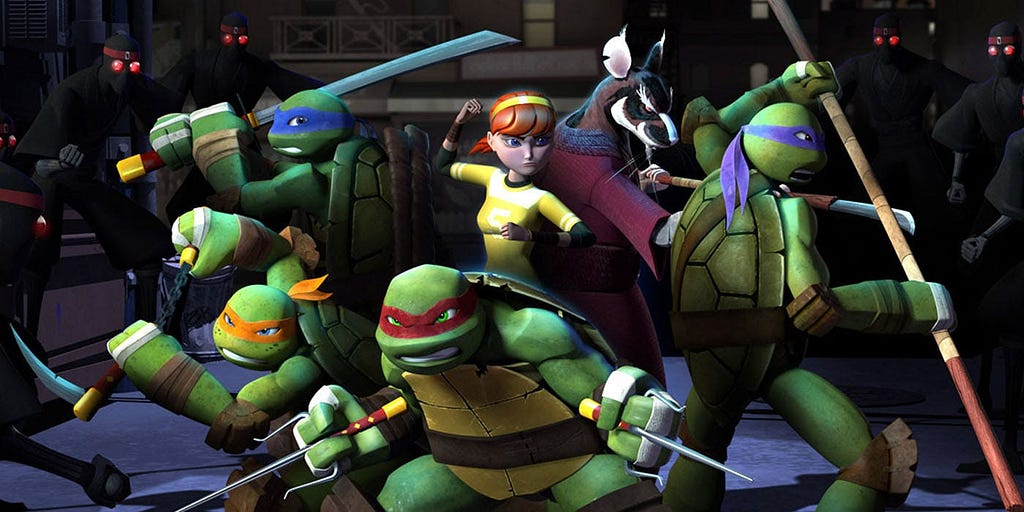
‘Teenage Mutant Ninja Turtles’ (2012)
Airtime and format: A half-hour show that aired intermittently during its run but typically had premieres on Friday, Saturdays, or Sundays.
Network: Aired on Nickelodeon.
Concept: It’s 3D-rendered take on the turtles that’s arguably the hippest of the three cartoons, characterized by comic book imagery and anime-esque visual humor, and it centers on the turtles facing ever-increasing threats connected to the same mutagen that created them.
Why it worked: If ’87 was campy and 2k3 was gritty, then 2k12 is an almost seamless blend of both. It had plenty of goofy moments and cheeky fourth-wall gags, but, as the series went on, it also wasn’t afraid to get serious and boasted increasingly elaborate action scenes. 2k12 was like a love letter to the franchise, pooling together elements from multiple continuities and utilizing them in refreshingly new ways.
2k12 sought to give its characters a richer depth, granting more meaning to their actions. Returning characters were given interesting redesigns that reflected their personalities, and well-developed new characters, such as Tiger Claw, were wonderful foils. It even had the moxie to eventually kill off some longstanding characters of the franchise. It also went deeper than any TMNT cartoon had gone before, proving once again that there are tons of great stories that can and will be told about the Ninja Turtles.

‘Rise of the Teenage Mutant Ninja Turtles’ (2018 and beyond)
It’s hard to say exactly where the TMNT franchise will go after three successful cartoons, but we don’t have to wait long to get some answers. The latest cartoon — Rise of the Teenage Mutant Ninja Turtles — is, well, on the rise and set to premiere this month on Nickelodeon, on September 17, 2018.
In fact, Nick already released a few episodes online, just to tease fans with what’s to come, and it seems safe to say that Rise is the Ninja Turtles as we’ve never seen them before. Not only are the designs drastically different, but the animation is gorgeously fluid, giving the show a dynamic, unbridled energy that’s a treat to see in motion. It’s got me both excited to see more and curious how the show will develop itself after such a vibrant start.
But, if Rise — or any future TMNT cartoon — wants to succeed as a beloved part of this franchise, then it’s going to have to do what its predecessors have done: take things in a bold new direction while still keeping an eye on where they came from.
Each cartoon has uniquely built itself off the foundation of the franchise, celebrating TMNT history while still delivering their fresh take on it (Heck, both 2k3 and 2k12 even had crossovers featuring both the ’87 Turtles and the Mirage Turtles). They show that TMNT is like a perfectly rounded pizza: each incarnation can pile on just about any mix of toppings it likes, but so long as it has the core ingredients people know and love, it’ll still be something good. Sure, some fans might not like a particular creation as much, but they’ve developed enough of a taste for the TMNT style that they’ll likely stick around and eagerly wait for the next creation to finish in the oven.
Thanks for reading The Dot and Line, where we talk about animation of all kinds. Don’t forget to for this article and follow us on Twitter and Facebook.




